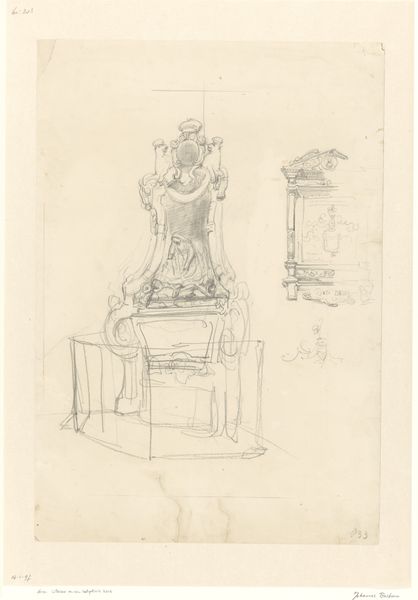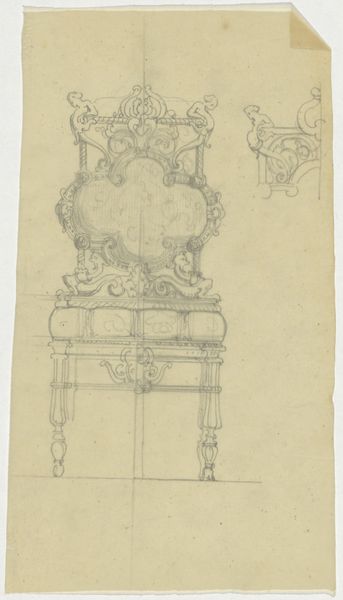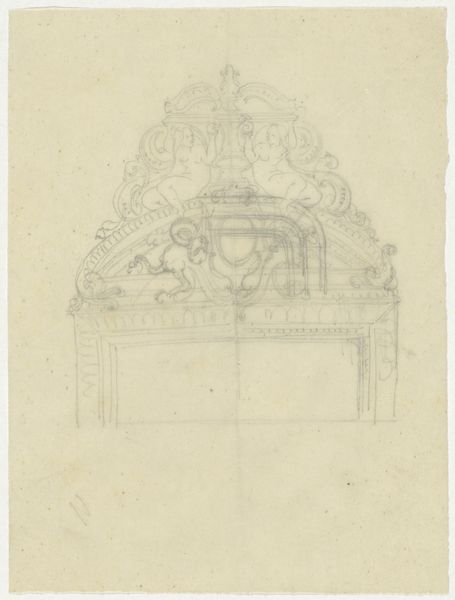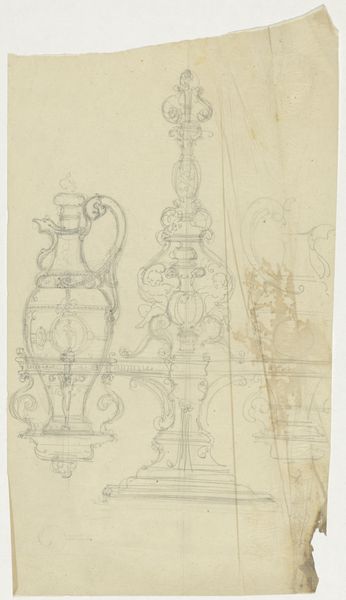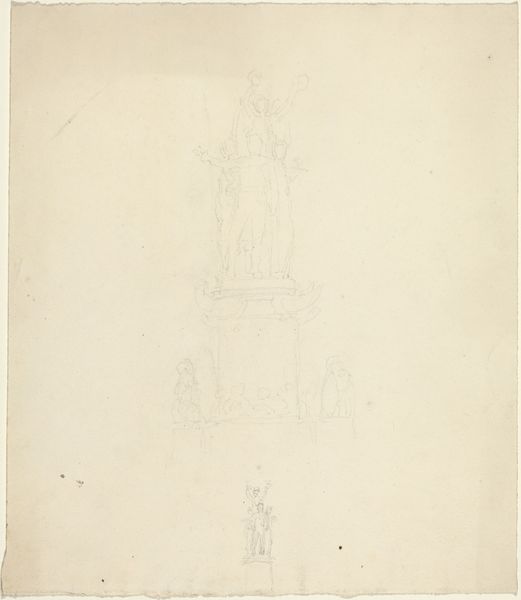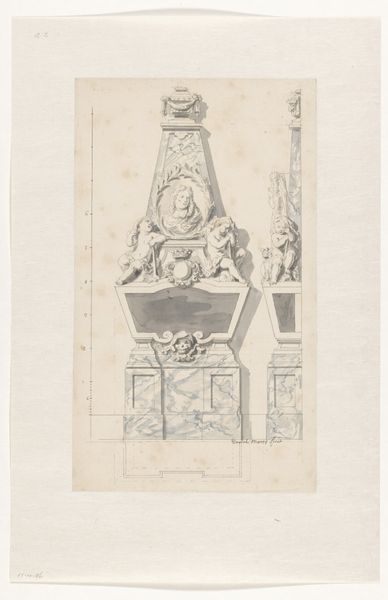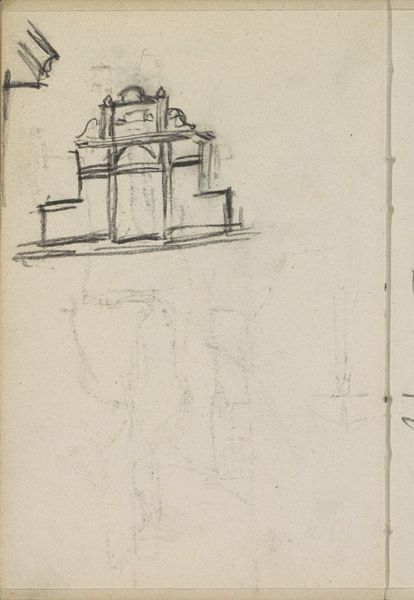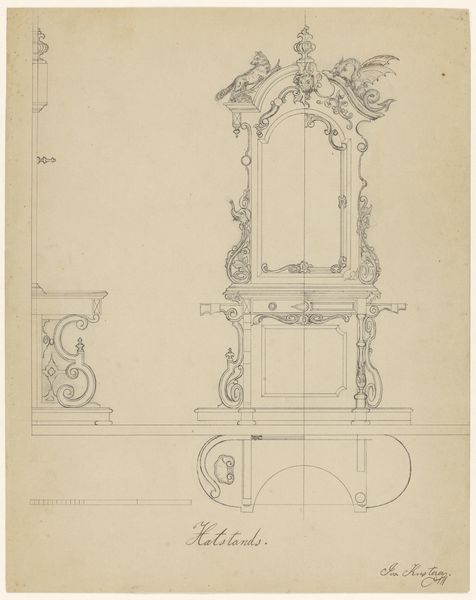
#
toned paper
#
light pencil work
#
blue ink drawing
#
quirky sketch
#
personal sketchbook
#
ink drawing experimentation
#
sketchbook drawing
#
watercolour illustration
#
sketchbook art
#
watercolor
Dimensions: height 280 mm, width 298 mm
Copyright: Rijks Museum: Open Domain
This clock was designed by Firma Feuchère with pencil and paper. While the drawing itself may seem like a simple plan, it's a window into the complex world of 19th-century design and production. The pencil lines, though delicate, represent the initial stage of a clock that was likely intended to be made of metal, perhaps bronze or gilded brass. Notice the gothic revival details, the figures, and the overall architectural form. These elements speak to the revival of historical styles popular at the time, often associated with luxury and elite craftsmanship. The clock's design blends artistry with mechanical precision, reflecting a desire to unite beauty with functionality. We can imagine the drawing being used as a template by skilled metalworkers, who would have translated this two-dimensional sketch into a three-dimensional object, employing techniques such as casting, chasing, and engraving. Ultimately, understanding this clock design is about recognizing the many hands and processes involved in its creation, challenging the idea of the artist as the sole author and highlighting the importance of craft in bringing art to life.
Comments
No comments
Be the first to comment and join the conversation on the ultimate creative platform.

